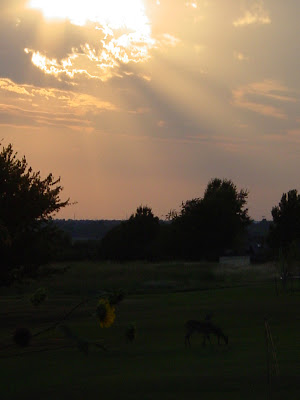My son (T2) was overheard in preschool talking with his friends at great length about naked ladies. Yes, he was telling them, he really liked naked ladies. In fact, we had naked ladies at our house. They were in the backyard! And on and on he went. To her credit, the teacher listening in followed the conversation until she could make better sense of it, and finally realised the darling boy was referring to a type of flower! She was quite relieved. It’s true, of course. We do have naked ladies dancing in our garden. Rather, we did until the plumbing team dug them up last spring. They have bloomed there since we first moved in. My husband was all for having naked ladies in the backyard. When I mentioned the possibility to our youngest (T3), who has never seen them, he was strongly against the idea. "I don't want naked ladies in our garden, no way!" "Why not?" He thought that was the silliest question anyone could ask him.Naked ladies are so named because the flowers grow on a long stem without any foliage. Flowers appear at the end of the summer, around September. There is foliage, made up of long strappy, dark green leaves. But it comes up in the spring. In fact, we spend the first couple weeks the leaves show up scratching our heads wondering whether we will see a crowd of daffodils, or if half the leaves belong to the naked ladies.

Lycoris radiata (click the photo to ogle some naked ladies more closely)
This photo I stopped to snap on our way to futból practice, so it may not be in the best of focus, but you see the environment and their shape. I had been on the lookout for naked ladies, since ours were too shy to come out this September, and noticed some dancing 'round a tree the next block down from our house. The next day they were gone. Maybe that neighbor thought I was taking notes on the condition of his garden and decided to thin out the older blooms. I found some specific information about Lycoris radiata in Scott Ogden's book, "Garden Bulbs for the South". These have also been referred to as “spider lily” due to their spidery appearance. I think they look like dancers in their fancy red dresses, with arms reaching up to beckon the sky.
And here is a really fine photo of some naked ladies, along with some interesting information. The Lycoris radiata has perhaps a little deeper significance in Japan than those grown decoratively in the southern United States.
In the spring, if you see some long green leaves that lead you to believe you may be seeing tulips or daffodils soon, and yet no flowers follow, don't disturb them. Let the leaves stay. You never know if the naked ladies will come dancing in the autumn, in search of their lovely green dressing gowns.



















